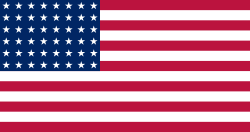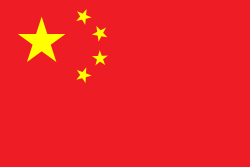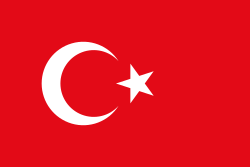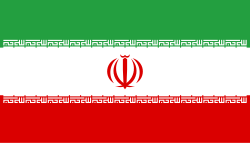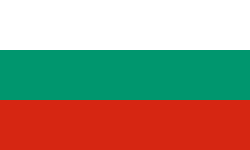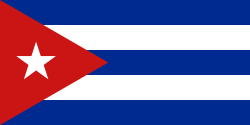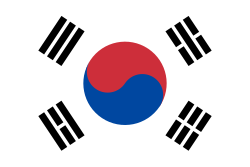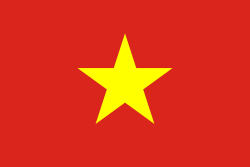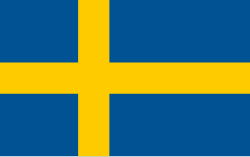Nikolaj Pešalov
| Nikolaj Pešalov | |
|---|---|
| Narození | 30. května 1970 (54 let) Pazardžik |
| Povolání | vzpěrač |
| Některá data mohou pocházet z datové položky. Chybí svobodný obrázek. | |
| Přehled medailí | ||
|---|---|---|
| zlato | LOH 2000 | váha do 62 kg |
| stříbro | LOH 1992 | váha do 60 kg |
| bronz | LOH 1996 | váha do 59 kg |
| bronz | LOH 2004 | váha do 69 kg |
| Mistrovství světa ve vzpírání | ||
| zlato | MS 1990 | pérová váha |
| zlato | MS 1993 | bantamová váha |
| zlato | MS 1994 | bantamová váha |
| bronz | MS 1995 | bantamová váha |
Nikolaj Pešalov (* 30. května 1970 Vetren) je vzpěrač reprezentující v letech 1989–1998 Bulharsko a v letech 1998–2004 Chorvatsko. Pro Bulharsko vybojoval dvě olympijské medaile, stříbro v Barceloně roku 1992 a bronz v Atlantě roku 1996 (obě v bantamové váze, tedy do 59, respektive 60 kg). Také v chorvatském dresu vybojoval dvě medaile na olympiádách, v Sydney roku 2000 zlato (do 62 kg) a za čtyři roky v Athénách bronz (do 69 kg).[1] Je též trojnásobným mistrem světa, všechny tituly získal ještě v bulharském dresu (1990, 1992, 1994). Má rovněž osm titulů mistra Evropy, šest jako Bulhar (1991, 1992, 1993, 1994, 1995, 1997) a dva jako Chorvat (2000, 2001). Během své kariéry překonal pět světových rekordů. V roce 2000 byl vyhlášen chorvatským sportovcem roku, v tradiční anketě deníku Sportske novosti.
Reference
V tomto článku byl použit překlad textu z článku Nikolaj Pešalov na anglické Wikipedii.
- ↑ Nikolai PESHALOV - Olympic Weightlifting | Croatia. International Olympic Committee [online]. 2016-06-22 [cit. 2020-08-22]. Dostupné online. (anglicky)
Externí odkazy
- Nikolaj Pešalov v databázi Olympedia (anglicky)
Média použitá na této stránce
Olympic Rings without "rims" (gaps between the rings), As used, eg. in the logos of the 2008 and 2016 Olympics. The colour scheme applied here was specified in 2023 guidelines.
Olympic Rings without "rims" (gaps between the rings), As used, eg. in the logos of the 2008 and 2016 Olympics. The colour scheme applied here was specified in 2023 guidelines.
The civil ensign and flag of Belgium. It is identical to Image:Flag of Belgium.svg except that it has a 2:3 ratio, instead of 13:15.
Autor: F l a n k e r, Licence: CC BY-SA 2.5
Flag of the Kingdom of Sardinia (1851-1861) and of the Kingdom of Italy (1861-1946). Use: Civil flag and ensign. In a governmental or a military context, the crowned version (see Crowned version) was always used (as State flag and naval ensign).
Autor: F l a n k e r, Licence: CC BY-SA 2.5
Flag of the Kingdom of Sardinia (1851-1861) and of the Kingdom of Italy (1861-1946). Use: Civil flag and ensign. In a governmental or a military context, the crowned version (see Crowned version) was always used (as State flag and naval ensign).
US Flag with 48 stars. In use for 47 years from July 4, 1912, to July 3, 1959.
flag of the Kingdom of Egypt (1922–1953) and the Republic of Egypt (1953–1958).
flag of the Kingdom of Egypt (1922–1953) and the Republic of Egypt (1953–1958).
(c) I, Cmapm, CC BY-SA 3.0
The flag of the Soviet Union (1955-1991) using a darker shade of red.
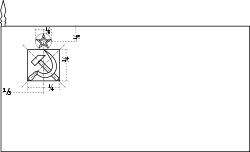
(c) I, Cmapm, CC BY-SA 3.0
The flag of the Soviet Union (1955-1991) using a darker shade of red.

Variant version of a flag of Japan, used between January 27, 1870 and August 13, 1999 (aspect ratio 7:10).
Autor: Scroch, Licence: CC BY-SA 3.0
Flag of Bulgaria (1971-1990). Flag of Bulgaria with Bulgarian coat from 1971.
Autor: Scroch, Licence: CC BY-SA 3.0
Flag of Bulgaria (1971-1990). Flag of Bulgaria with Bulgarian coat from 1971.
Při zobrazení tohoto souboru lze snadno přidat orámování
Flag of Iran. The tricolor flag was introduced in 1906, but after the Islamic Revolution of 1979 the Arabic words 'Allahu akbar' ('God is great'), written in the Kufic script of the Qur'an and repeated 22 times, were added to the red and green strips where they border the white central strip and in the middle is the emblem of Iran (which is a stylized Persian alphabet of the Arabic word Allah ("God")).
The official ISIRI standard (translation at FotW) gives two slightly different methods of construction for the flag: a compass-and-straightedge construction used for File:Flag of Iran (official).svg, and a "simplified" construction sheet with rational numbers used for this file.
Chinese Taipei Olympic Flag. According to the official website of Chinese Taipei Olympic Committee, Blue Sky(circle) & White Sun(triangles) above the Olympic rings is neither the National Emblem of the Republic of China, nor the Party Emblem of Kuomintang (KMT), but a design in between, where the triangles do not extend to the edge of the blue circle, as registered at International Olympic Committee in 1981 and digitally rendered in 2013. Besides, the blue outline of the five-petaled plum blossom is broader than the red one. Moreover, the CMYK code of the blue one and the Blue Sky & White Sun is "C100-M100-Y0-K0", and different from the Olympic rings (C100-M25-Y0-K0). Note that it's the only version recognized by IOC.
bendera Indonesia
Autor: Dragovit (of the collage), Licence: CC BY-SA 4.0
Both national flags of Austro-Hungary, the collage of flags of the Cisleithania (Habsburg Monarchy) and the Transleithania (Kingdom of Hungary)
Flag of the Germans(1866-1871)
Flag of the Germans(1866-1871)
National flag and merchant ensign of Germany from 1933 to 1935.
National flag and merchant ensign of Germany from 1933 to 1935.
this is the flag of the Soviet Union in 1936. It was later replaced by File:Flag of the Soviet Union (1955-1980).svg.





